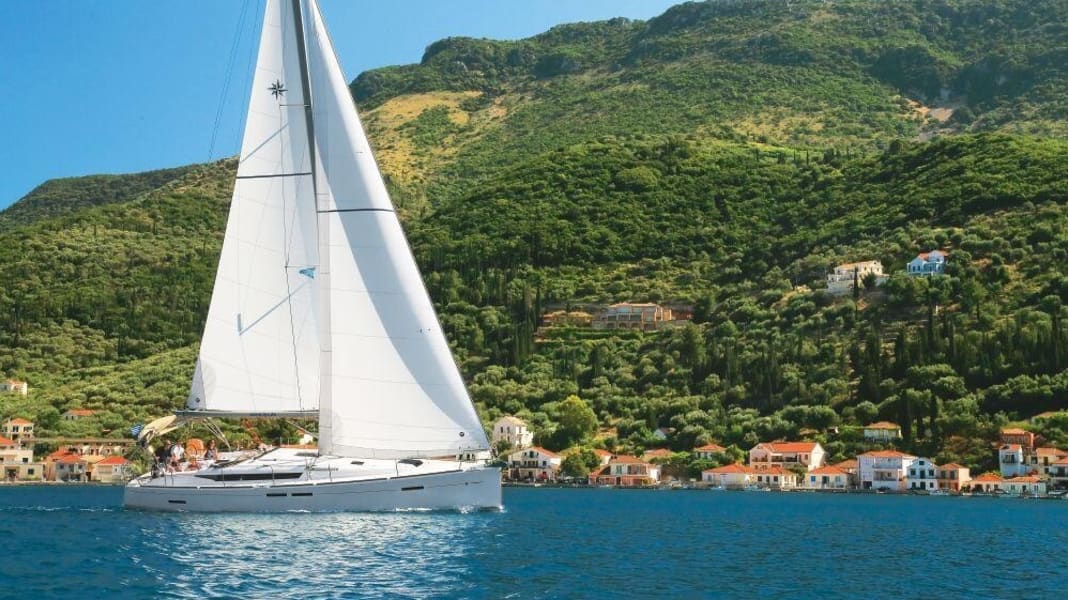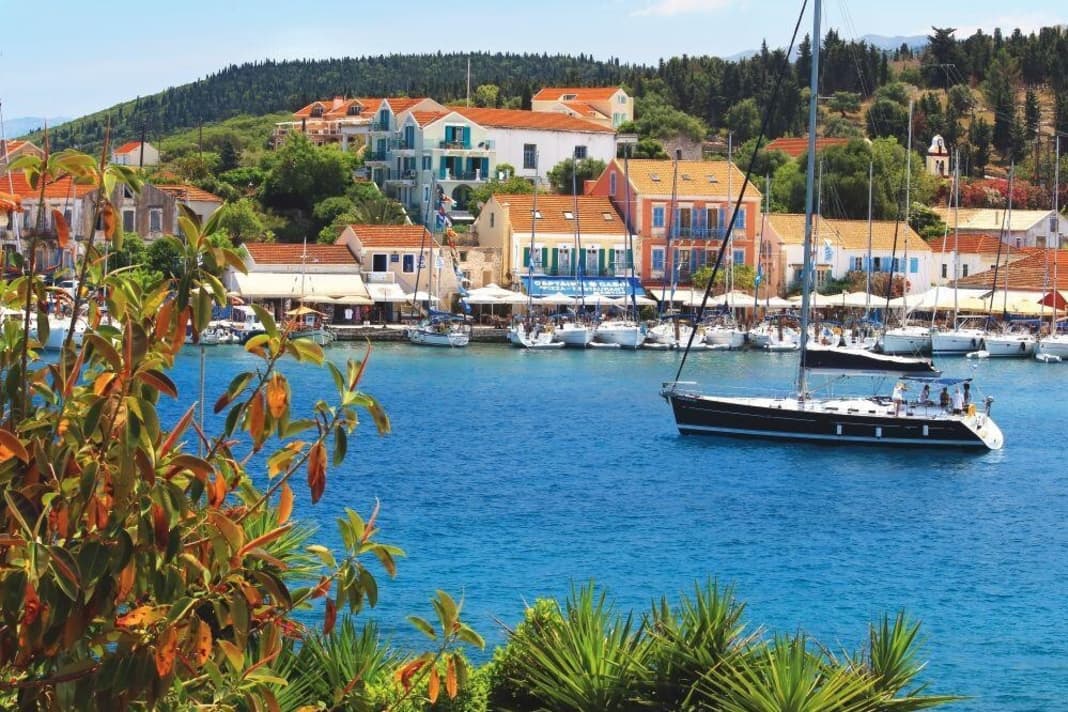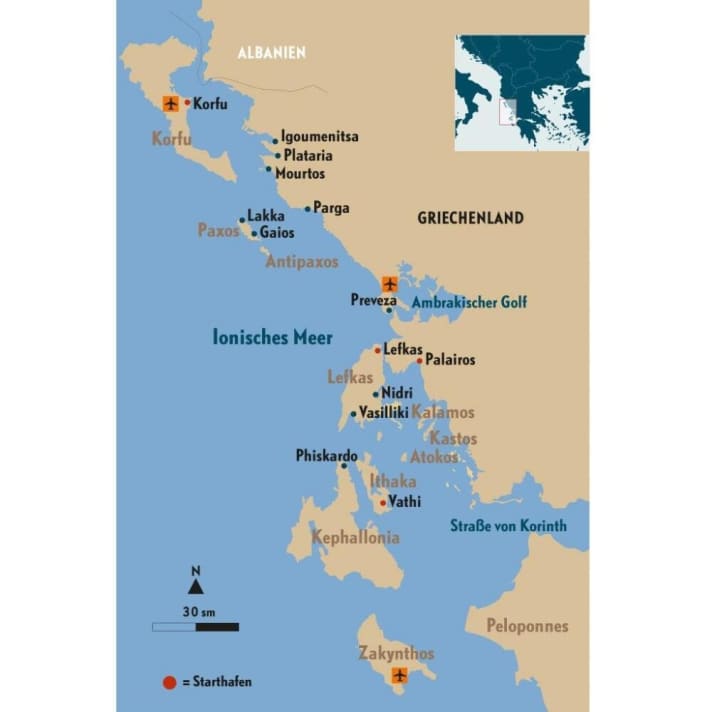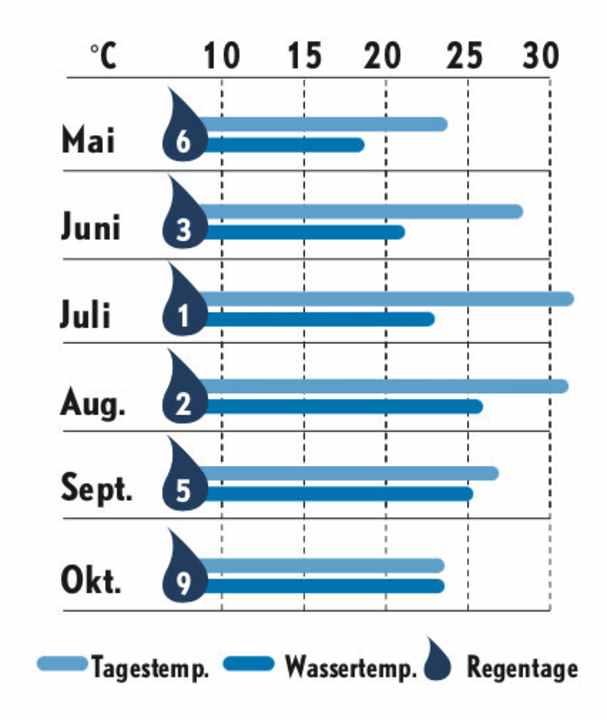






ARRIVAL
Flights to Corfu from many German airports, alternatively to Preveza on the mainland and then take off from Lefkas or Nidri on the island of the same name. However, the connection from Corfu is better and the flights are more frequent. A few fleet providers also have stations on the mainland near Palairos. The transfer takes about 20 to 35 minutes. The flight connections are good, prices around 300 to 450 euros.

CHARTER
Very large fleet selection of charter companies in the Gouvia marina on Corfu and in Lefkas on the island of the same name. If you start in Corfu and only sail for a week, you usually don't get to the heart of the area, which lies south of the Lefkas Channel. Two weeks is better. Alternative start from Lefkas.

WIND & WEATHER
The wind conditions here are much easier in the summer season than in the Aegean, which is often dominated by the stormy Meltemi in midsummer. The archipelago between Corfu and Zakynthos in the south is a classic thermal area in summer. It builds up slowly during the day and reaches three to four wind forces in the afternoon before dying down in the evening. It then often blows from the west to north-west. The nights are often calm, which is one of the reasons why skippers love the area. From around mid-September and in spring, this thermal influence becomes significantly weaker and the weather scenario slowly changes. The wind blows less frequently from the north-west and shifts more often to south-easterly directions. If the latter is the case, it can blow quite steadily and often strongly from this direction for longer periods, up to a week or more.
Good weather and swell forecasts can be found on the website of the Greek weather servicePoseidon (www.poseidon.hcmr.gr) and the usual sources such asWindy (www.windy.com) orWindfinder (www.windfinder.de) and its iOS and Android apps.
HARBOURS & ANCHORAGES
Apart from marinas in Corfu, Lefkas, Preveza and Vathi (Meganisi), simple town harbours. Moorings in front of bow anchor with stern to pier, mooring lines in the marinas. Higher harbour dues there, but usually very cheap in the city harbours. If they are, around 10 to 15 euros for a 42-foot boat. There are no sanitary facilities, water and electricity are increasingly available, but often only by tanker, just like diesel. On the other hand, you are right in the centre of town, with tavernas and cafés directly in front of the pier. Greece is the cheapest area in the entire Mediterranean due to the low or zero mooring fees. Buoy fields with fees are a foreign concept here. There are plenty of sheltered, beautiful anchorages with good grounds - but almost never on the steep western sides of the islands.
NAVIGATION & SEAFARING
The area is easy to navigate, but some wind jets (between Kephallonia and Ithaca, Kalamos north and west side) can cause surprises. The Lefkas channel was last dredged in 2015, but quickly silts up. Don't drive too close to the edges. The floating bridge opens every hour, request it by radio after sunset. In no other area of the Mediterranean are there more flotillas than in the Ionian Sea. They can fill the harbours of smaller towns quite quickly in the afternoon (for example Kioni or Phiskardo), so that all the places are occupied. Bays are also often crowded with groups. The only thing to do then is to move to a bay and try to sail anti-cyclically: The tavern keepers know exactly when the crews are coming, otherwise ask one of the flotilla leaders, who are often waiting for the crews at the pier.
LITERATURE & MAPS
A. Fritsch: Charter Guide Ionian Sea, 19.99 euros. Rod Heikell: Greek coast, 54 euros. The best charts are the Greek pleasure craft charts from Eagle Ray (GR G PC2/GR PC 17 to 19), 24 euros, but many crews also use the British pleasure craft charts from Imray (24.50 euros).
TERRITORY CHARACTERISTICS
Western Greece is different from the Aegean: greener, more sheltered, the distances are shorter, the wind is gentler. In a word: lovelier. Especially compared to the Aegean, which is in the stormy hands of the Meltemi all summer long. The Ionian Sea, on the other hand, is well suited to crews who are not yet fully experienced. The wind is rather thermal, it builds up during the day and blows pleasantly in the afternoon, at night the water is usually as smooth as glass. The islands, which are often steeply sloping on the western sides, have many sheltered spots on their eastern sides.
However, it is not the moderate wind that makes the Ionian Sea unique - but this mix of small and large islands, each with its own character. Some are large and touristy like Corfu. Others are tiny and are almost only visited by sailors, such as Atokos or Ithaca. What they have in common is the originality of their places. They are often simple fishing villages with a few tavernas, shops, bars and small hotels. The yacht moors right in front of the taverna tables.
The tranquil town harbours have simple piers instead of large, anonymous marinas. However, the harbours also offer hardly any service. Anyone expecting good sanitary facilities, mooring lines and marinero service around the boat will not be happy here.
Beautiful beaches, crystal-clear water and a few sights complete the picture. While sailing, the crew enjoys the sight of an often very green coastal landscape, interspersed with cypresses, pines, dense maquis and olive trees. Unlike the Aegean, the region is not parched by the hot Meltemi. The houses in the old towns are pastel-coloured; the simple white cube houses of the Aegean are almost non-existent here.
The cruise will start from Corfu or Lefkas, the latter being the harbour with the shortest distances, the best protection and the most destinations. Which should please all crews: The area is one of the cheapest in Europe, both in terms of the very low berthing fees and the prices in restaurants and bars.
The only downside is that there are many flotillas and charter yachts on the move, and in the high season and sometimes also in the popular months such as September, it can get quite crowded in popular harbours such as Phiskardo, Kioni, Gaios or Vathi. If you really want a place on the pier, you should moor up in the early afternoon. But if you can come to terms with this, the Ionian Sea is a top spot.

